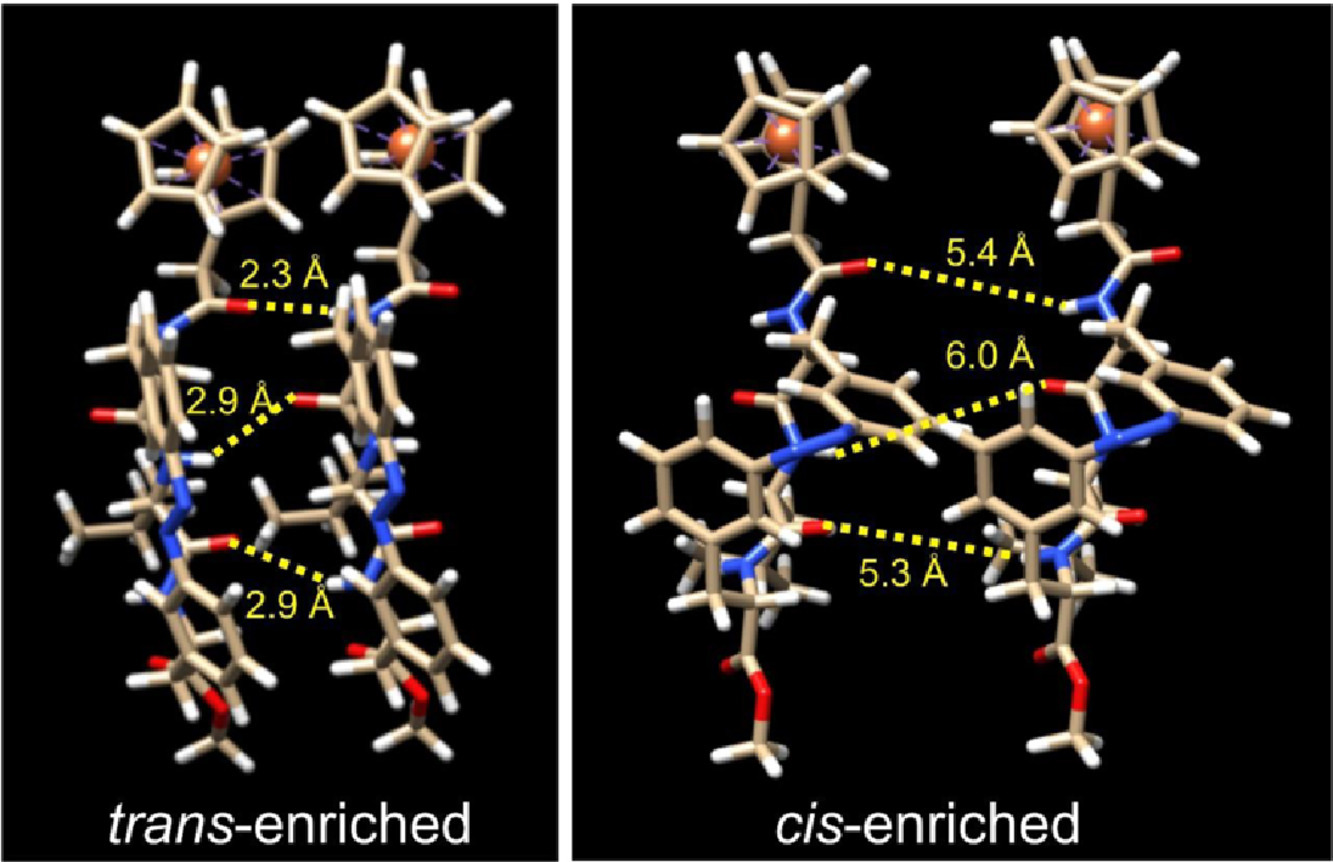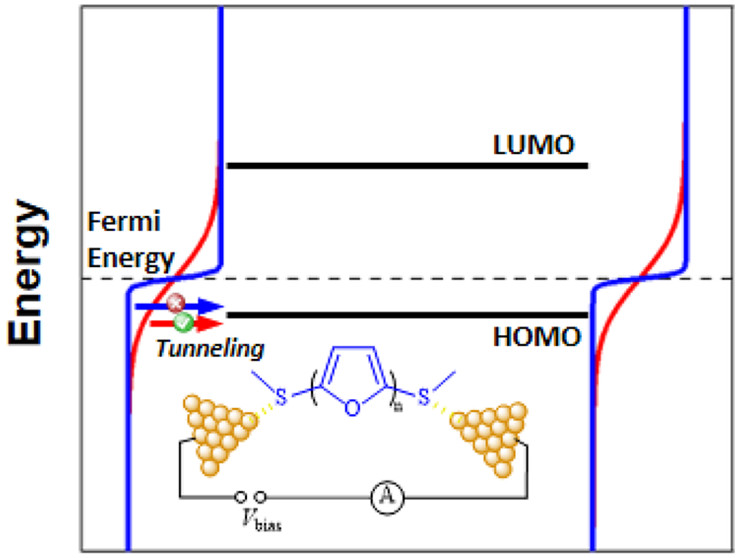Spin-selective Electron Transfer in Chiral Peptides
Molecular electronics is at the forefront of interdisciplinary research, providing an opportunity to go beyond the inescapable physical limitations of conventional electronics that are based on “top-down” approaches such as photolithography and etching. It provides a major extension of the capabilities of conventional silicon-based technology, as well as being a possible stand-alone alternative. Bio-inspired molecular electronics is a particularly intriguing paradigm, as electron transfer in proteins/peptides plays a crucial role in energy conversion and storage processes in all living organisms and is central to these developments. Hence, understanding the electronic properties of single peptides is not only of fundamental importance, it is also paramount to the design and development of functional bio-inspired molecular electronic devices
Area of science
Chemistry
Systems used
Magnus
Applications used
SIESTA/TranSTESTA, NWChem, Quantum EspressoThe Challenge
The potential to redefine integrated circuit technologies and revolutionize modern computing is now within reach, with solid-state peptide-based devices being of prime importance as the density of electronic components within a circuit increases. Experimental studies have been undertaken to measure these properties in single molecules bound between two electrodes, forming a molecular junction. However, the ability to comprehensively determine the electronic transport properties of a peptide at the molecular level remains a challenging and exciting frontier for scientific research.
The Solution
The chiral-induced spin selectivity (CISS) effect represents a major breakthrough, especially (but not only) in spintronics, since it may help to bypass the need of engineering the magnetic properties into nonmagnetic organic molecules, for example, by adding magnetic dopants. This provides a new strategy to manipulate electron spins in organic molecules without the need for the presence of inorganic magnetic substrates to induce spin selectivity. We propose here to conduct quantum transport simulations and analysis of linear-regime electron transmission/reflection in relatively short chiral peptides (for example tripeptides), using the model based on the Landauer-Büttiker theory in conjunction with the density functional non-equilibrium Green’s function (NEGF-DFT-Landauer).
The Outcome
These computational resources are crucial to provide an atomic level description of the underlying charge transfer mechanisms and pathways in peptide-based single-molecule devices. In support of experimental observations, this project has been advancing a fundamental understanding of electron transport in naturally occurring peptides, while exploiting their electronic properties to promote the design and development of functional bio-inspired molecular electronic devices, for example peptide-based single-molecule on/off switches, multimodal bioinspired nanodevices.
List of Publications
1. Yimo Xiang, Yuhao Xu, Zhigao Yang, Jongbeom Na, Azhar Alowasheeir, Munirah D. Albaqami, Aboud Ahmed Awadh Bahajjaj, Shengping Wang,† Jingxian Yu,† and Yusuke Yamauchi.† Super-theoretical capacity mechanism of hollow nano-corn cob-like cobalt oxide. Chemical Engineering Journal. 2022, 430, 132700. (JCR1)
2. Lin-Qi Pei, John R Horsley, Jing-Wen Seng, Xu Liu , Yuan Qi Yeoh, Ming-Xia Yu, Xiao-Hui Wu, Andrew D Abell , Ju-Fang Zheng, Xiao-Shun Zhou,† Jingxian Yu,† and Shan Jin.† Mechanically Induced Switching between Two Discrete Conductance States: A Potential Single-Molecule Variable Resistor. ACS Applied Materials and Interfaces. 2021, 13, 48, 57646–576532. (JCR1)
3. Yinsheng Xu, Yuhao Xu, Xue Han, Shengping Wang,† and Jingxian Yu.† From 1D to 1D–2D–1D: new insights into Li+ diffusion behavior in optimized MnO2 with the cooperative effect of tunnel and interface. Journal of Materials Chemistry A. 2021, 9, 24397–244050. (JCR1)
4. Yimo Xiang, Yuhao Xu, Zhigao Yang, Jongbeom Na, Alowasheeir Azhar, Munirah D. Albaqami, Aboud Ahmed Awadh Bahajjaj, Shengping Wang,† Jingxian Yu,† Yusuke Yamauchi.† Super-theoretical capacity mechanism of hollow nano-corn cob-like cobalt oxide. Chemical Engineering Journal. 2021, https://doi.org/10.1016/j.cej.2021.132700
5. Yong An, Xue Han, Yuyang Liu, Alowasheeir Azhar, Jongbeom Na, Ashok Kumar Nanjundan, Shengping Wang, Jingxian Yu,† Yusuke Yamauchi. Progress in Solid Polymer Electrolytes for Lithium-Ion Batteries and Beyond. Small. 2021. https://doi.org/10.1002/smll.202103617
6. John R. Horsley, Xiaobo Wang, Jingxian Yu,† Andrew D. Abell.† Exploiting conformationally gated electron transfer in self-assembled azobenzene-containing cyclic peptides using light. Electrochimica Acta. 2021, 381, 138232. (invited)
7. Yinsheng Xu, Zhengnan Wang, Zhigao Yang, Jongbeom Na, Alowasheeir Azhar, Shengping Wang,† Jingxian Yu,† Yusuke Yamauchi.† New Insights into the Lithium-ion Diffusion Mechanism in Vanadate Compounds. ACS Energy Letters. 2021, 6(3) 886–892.
8. Haipeng B. Li, Yan-Feng Xi, Ze-Wen Hong, Jingxian Yu, Xiao-Xia Li, Wen-Xia Liu, Lucas Domulevicz, Shan Jin, Xiao-Shun Zhou, and Joshua Hihath. Temperature-Dependent Tunneling in Furan Oligomer Single-Molecule Junctions. ACS Sensors. 2021, 6, 2, 565–572.
9. Qianchuan Yu, Zhihuan Xue, Shengping Wang,† Jingxian Yu,† Jongbeom Na, and Yusuke Yamauchi.† Electrochemical activity of nitrogen-containing groups in organic molecule electrode materials and their improvement strategies. Advanced Energy Materials. 2021. 11, 2002523

Figure 1. Fabrication of solid-state single-molecule switches with high on-off conductance ratios has been proposed to advance conventional technology in areas such as molecular electronics. Herein, we employed the scanning tunnelling microscope break junction (STM-BJ) technique to modulate conductance in single-molecule junctions using mechanically induced stretching. Compound 1a possesses two dihydrobenzothiophene (DHBT) anchoring groups at opposite ends linked with rigid alkyne side arms to form a gold-molecule-gold junction, while 1b contains 4-pyridine anchoring groups. Incorporation of ferrocene into the backbone of each compound allows rotational freedom about the cyclopentadienyl (Cp) rings to give two distinct conductance states (high and low) for each. Various control experiments and suspended junction compression/retraction measurements indicate that these high and low conductance plateaus are the result of conformational changes within the junctions (extended and folded states) brought about by mechanically induced stretching. A high-low switching factor of 42 was achieved for 1a, whereas an exceptional conductance ratio in excess of two orders of magnitude (205) was observed for 1b. To the best of our knowledge, this is the highest experimental on-off conductance switching ratio for a single-molecule junction exploiting the mechanically induced STM-BJ method. Computational studies indicated the two disparate conductance states observed for 1a and 1b result from mechanically induced conformational changes, due to an interplay between conductance and the dihedral angles associated with the electrode-molecule interfaces. Our study reveals the structure-function relationship that determines conductance in such flexible and dynamic systems, and promotes the development of a single-molecule variable resistor with high on-off switching factors. (ACS Applied Materials and Interfaces. 2021, 13, 48, 57646–576532.)







